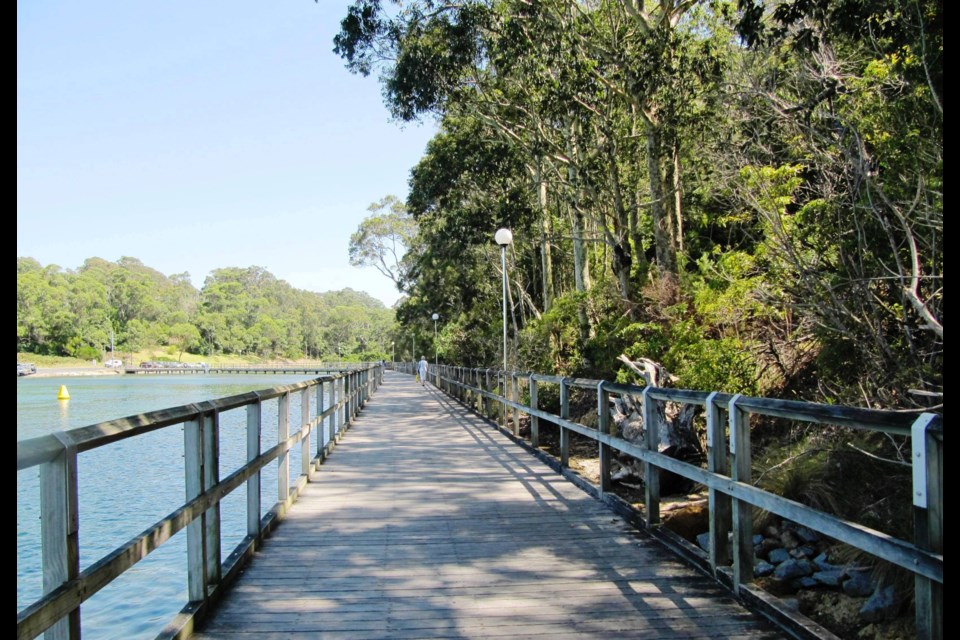"Ting! Tong! Ting! Tong!"
The mellow notes float down to me from a thicket of eucalyptus trees, but although I crane my neck to peer through the branches, I can't track down the songsters. They are Australian bellbirds that I'm told are very hard to spot, so I'm content to merely listen, fascinated.
Like the bellbirds, many of Australia's feathered inhabitants are unique. There's the iconic kookaburra whose maniacal laughter lies on the morning air, the shoals of Major Mitchell cockatoos flying across the twilight sky with harsh screeches and the cluster of greedy lorikeets that crowd my balcony railings, looking for bread crumbs.
Cheeky and curious, they look as though they have been dipped in paint cans, their heads bright blue, and feathers scarlet, green and yellow. I have other visitors too: pink and grey galahs that survey me, heads cocked to one side, and a host of other birds that provide a morning wake up chorus of trills, coos, crooning riffs, whistles and flute-like calls.
Australia has much to charm its visitors, and it's more than bird life that takes my sister and me back again and again to this vast land. My Australian cousins, who play host on our frequent visits, drive us to picturesque Narooma, a holiday spot along the coast, about 300 kilometres south of Sydney.
Unlike the more popular resort of Bateman's Bay, which is about an hour's drive further north along the coast, Narooma isn't your typical foreign tourist watering hole. With a population of about 8,000, the seaside town boasts a few motels and family-owned restaurants, a movie theatre, a couple of servicemen's clubs that offer gamblers a chance to hit the jackpots at slot machines and a golf club that sits on a rise with panoramic views.
A shady boardwalk lined by spotted gums and feathery-leafed eucalyptus trees (where I pause to listen to those bellbirds) runs along Wagonga Inlet. This is where locals come by to hang a fishing rod over the boardwalk railings, lick ice-cream cones, ride their bicycles or merely sit on a bench and enjoy the summer breezes off the water.
Stingrays lurk shadow like in the shallows, and on an evening walk, we spot four fat and lazy seals sunbathing on one of the two rocky breakwaters that extend out to the sea. They are unfazed by the incessant crash of enormous whitecapped waves that lash the rocks.
We explore neighbouring towns, leisurely driving past colonial brick bungalows with tiled roofs, deep verandahs and balconies embellished with lacy wroughtiron fretwork. Crepe myrtle trees are in extravagant bloom - purple, orange, pink and white - and purple-fronded jacarandas droop over sidewalks.
Ten kilometres north of Narooma, the beach at Dalmeny is dotted with surfers riding waves that unfurl along the shore. Undulating meadows interspersed with groves of eucalyptus thickets lead to seaside villages like Mystery Bay where blonde
sands crunch warm between my bare toes.
Just a few kilometres south of Narooma we browse through the craft shops on the crooked sidewalks of the pretty little town of Tilba Tilba, in the heart of winery country.
The old Anglican church of All Saints in Bodalla, completed at the end of the 1800s, is of particular interest to me: it commemorates the memory of prominent Australian businessman Thomas Sutcliffe Mort, whose great, great granddaughter, now living in Canada, is a personal friend.
Perhaps the most poignant stop of all is at the Memorial Gardens at Tuross Heads where the pine tree grove commemorates Australia's role at Gallipoli in the First World War. Below the garden, waves rush the shore along the crescent-shaped cove.
Travel Writers' Tales is an independent travel article syndicate.



